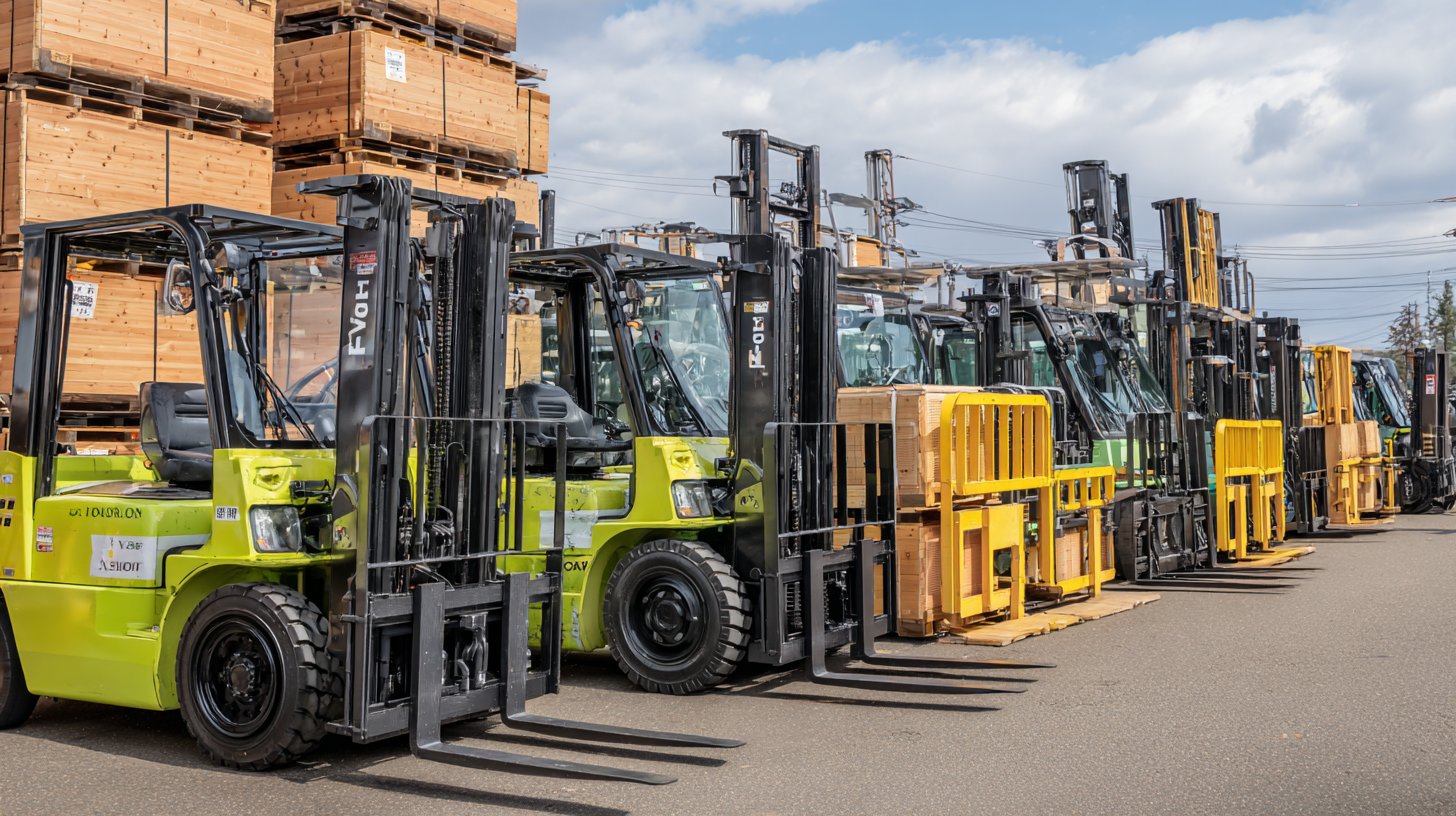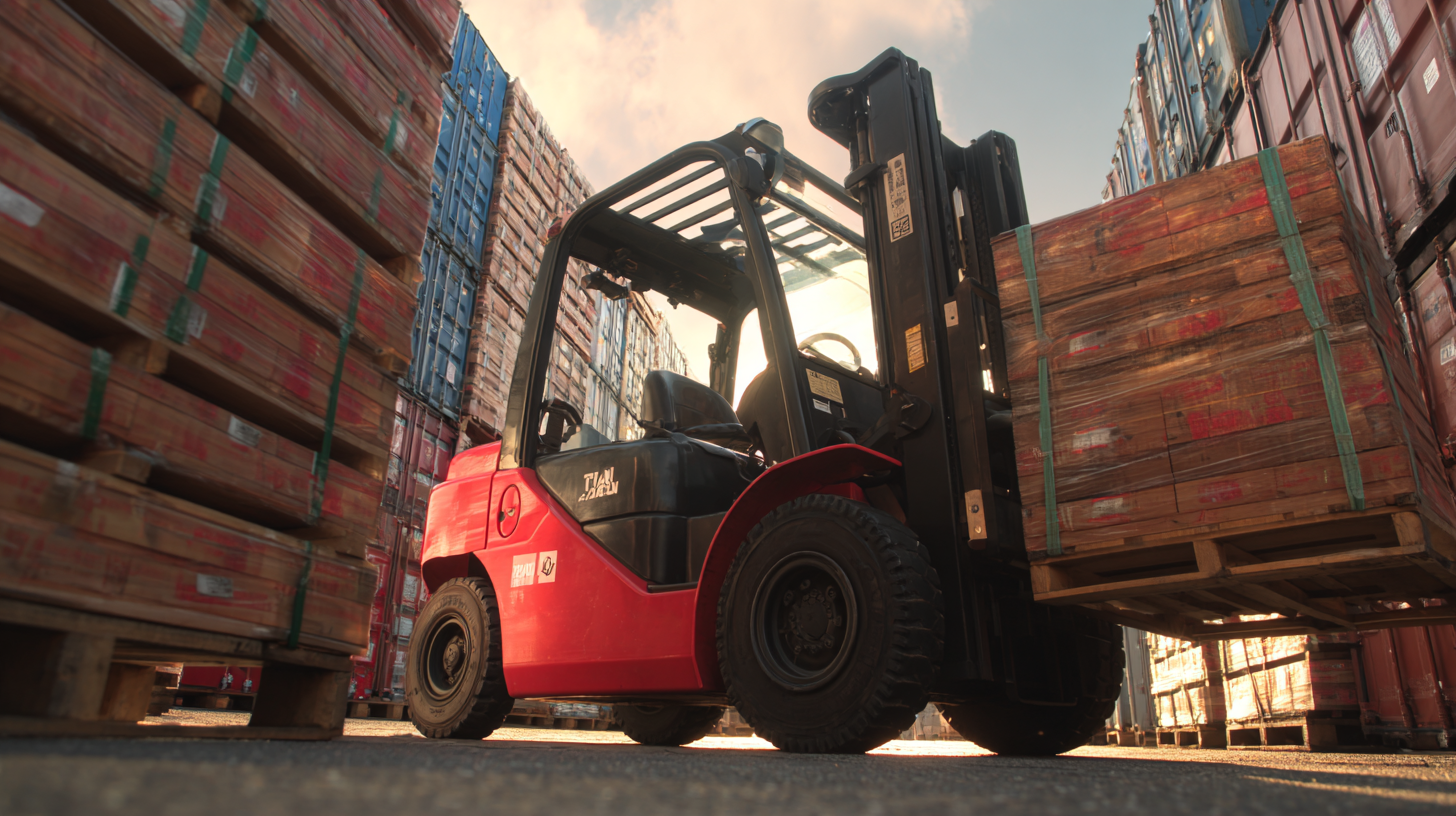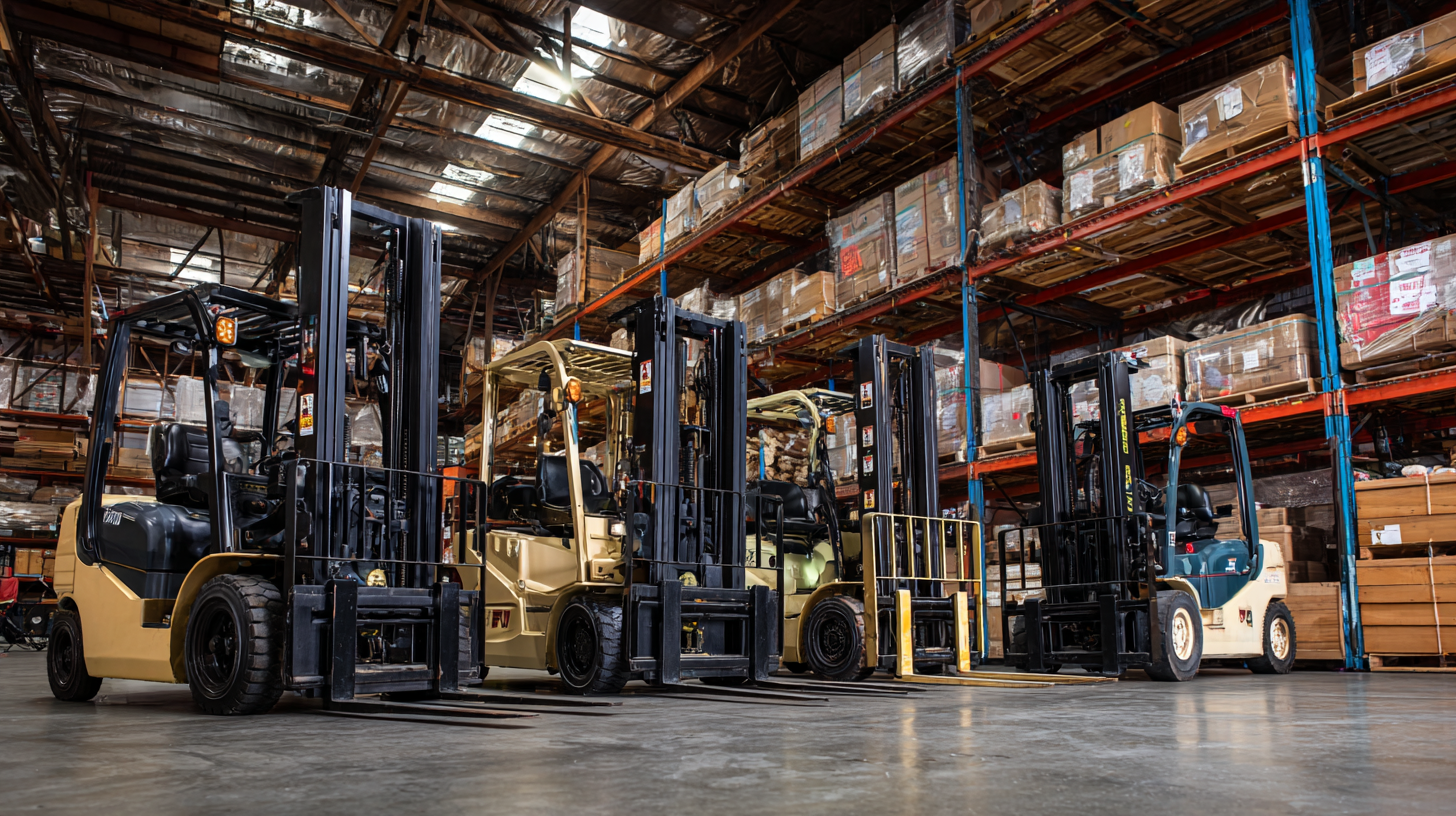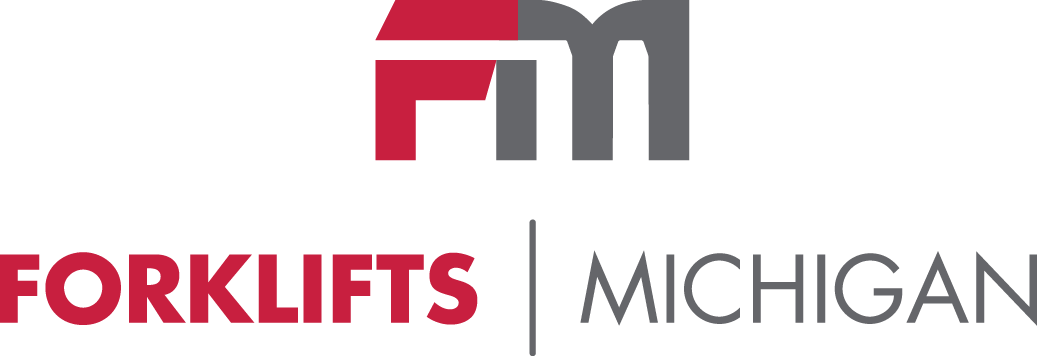Ultimate Guide to Comparing Best Home Forklifts for Global Buyers
In today's fast-paced world, the ability to efficiently transport goods at home has become increasingly valuable, making the selection of the right home forklift a crucial decision for buyers around the globe. Whether you are a homeowner aiming to streamline your personal projects or a small business owner looking to enhance your operational capabilities, understanding the various types of home forklifts available is essential. This ultimate guide provides a comprehensive comparison of the best home forklifts suited for a wide range of needs, focusing on factors such as lifting capacity, versatility, ease of use, and overall cost-effectiveness.

As we delve into the details, you will gain valuable insights that empower you to make an informed choice, ensuring that your investment in a home forklift not only meets your immediate requirements but also supports your long-term goals.
Key Differences Between Electric and Internal Combustion Forklifts in 2025 Market Trends
In 2025, the landscape of the forklift market is experiencing a notable shift driven by the increasing demand for efficient material handling solutions. The global forklift trucks market is projected to grow significantly, from 2,520.8 thousand units in 2025 to 4,904.9 thousand units by 2032, reflecting a robust compound annual growth rate (CAGR) of 10%. Central to this growth are the key differences between electric and internal combustion forklifts, which are becoming crucial factors for global buyers in making informed purchasing decisions.
Electric forklifts are rapidly gaining traction due to their increasing cost competitiveness and environmental benefits. With the electric forklift market expected to reach USD 234.49 billion by 2032, the transition away from internal combustion engines is evident. In contrast, traditional ICE forklifts are facing declining demand, with a reported 1% decrease in sales as consumers gravitate towards more sustainable solutions. As companies seek to optimize their operations and reduce carbon footprints, the advantages of electric forklifts—such as lower total cost of ownership and enhanced energy efficiency—are becoming prominent in the 2025 market trends.
Comparison of Electric vs. Internal Combustion Forklifts in 2025 Market Trends
This chart illustrates the market share distribution between electric and internal combustion forklifts in 2025. Electric forklifts are projected to capture 60% of the market, reflecting a strong trend towards sustainability and energy efficiency, while internal combustion forklifts hold a 40% share, emphasizing their continued relevance in certain applications.
Emerging Technologies: Revolutionizing Forklift Efficiency and Safety Standards
 Emerging technologies are reshaping the landscape of forklift operation, enhancing efficiency and safety standards like never before. The integration of IoT devices allows real-time monitoring of equipment conditions, helping to predict maintenance needs and reducing downtime. Moreover, advancements in battery technology have led to longer operating hours and quicker charging times, increasing productivity for businesses that rely on home forklifts.
Emerging technologies are reshaping the landscape of forklift operation, enhancing efficiency and safety standards like never before. The integration of IoT devices allows real-time monitoring of equipment conditions, helping to predict maintenance needs and reducing downtime. Moreover, advancements in battery technology have led to longer operating hours and quicker charging times, increasing productivity for businesses that rely on home forklifts.
When selecting a home forklift, consider opting for models equipped with advanced safety features. Tips like choosing forklifts that include an automatic braking system or proximity sensors can significantly reduce the risk of accidents. Additionally, look for electric forklifts that provide zero emissions, which not only enhances safety for operators but also mitigates environmental impacts.
The adoption of automated forklifts is another game-changer in the industry. These machines utilize artificial intelligence to navigate warehouses safely, minimizing human error while maximizing operational efficiency. For buyers, investing in automated solutions may seem daunting, but understanding their long-term efficiency gains can lead to greater savings and enhanced workplace safety.
Comparing Leading Home Forklift Brands: Features, Pricing, and Performance Metrics
When considering the purchase of a home forklift, it’s crucial to compare leading brands based on features, pricing, and performance metrics. According to a recent report from the Material Handling Industry of America (MHIA), the global forklift market is projected to grow at a CAGR of 6% from 2021 to 2027, highlighting the increasing demand for versatile and efficient material handling solutions in residential settings. Key features to consider include lifting capacity, battery life for electric models, and maneuverability in tight spaces. For instance, the Toyota 8FGCU25 model boasts a lifting capacity of up to 5,000 lbs and is lauded for its durability and ease of maintenance, making it a popular choice among homeowners.

Pricing can vary significantly among brands, influenced by performance and features. The average cost for home forklifts ranges from $3,000 to $10,000, depending on the functionalities required. A comparative analysis from Forklift Action indicates that brands like Heli and Jungheinrich offer competitive pricing while delivering robust performance metrics, such as a rapid lifting speed and enhanced energy efficiency. Additionally, understanding the warranty and support services provided by each brand is essential, as it can impact long-term satisfaction and servicing costs. Overall, carefully evaluating these factors can empower global buyers to make informed decisions tailored to their unique material handling needs.
Sustainability in Forklift Operations: The Shift Towards Eco-Friendly Models
As industries focus more on sustainability, the forklift sector is witnessing a notable shift toward eco-friendly models.
According to a recent report by the Industrial Truck Association, electric forklifts are expected to account for over 60% of all forklift sales by 2025, driven by increasing regulations and demand for greener operations.
Businesses are recognizing that sustainable lift solutions not only reduce their carbon footprint but also lead to significant cost savings in long-term operational expenses.
Tips: When considering a forklift, look for models that utilize lithium-ion batteries, known for their efficiency and lower environmental impact.
Additionally, evaluate maintenance costs associated with different forklift types; electric models often require less maintenance compared to internal combustion engines, further enhancing their sustainability.
Moreover, many manufacturers are innovating with hydrogen fuel cell technology, providing an alternative that offers zero-emission solutions and extended run times.
The growing trend indicates that businesses committed to sustainability will have a competitive edge, enhancing their brand image while contributing to a healthier planet.
Tips: Monitor the lifecycle emissions of the equipment you consider and favor those with comprehensive sustainability credentials, as these can often provide unseen advantages in regulatory compliance and market appeal.
Global Buyer Insights: Making Informed Decisions in Home Forklift Purchases
When considering the purchase of a home forklift, global buyers are faced with a unique set of challenges and opportunities. Understanding the various features and specifications of different models is crucial to making an informed decision. From lift capacities to battery types, each aspect of a forklift can significantly impact its performance and suitability for your specific needs. Prospective buyers should conduct comprehensive research that includes user reviews, expert opinions, and comparisons of leading brands available in their regions.
Moreover, it's essential to consider the long-term implications of owning a forklift, including maintenance costs and potential resale value. Many buyers overlook the importance of after-sales support and warranty offers, which can vary significantly across manufacturers. By prioritizing these factors and aligning them with your operational requirements, you can ensure that your investment in a home forklift is both practical and beneficial. With the right information at hand, global buyers can confidently choose a forklift that not only meets their immediate needs but also serves them well into the future.


